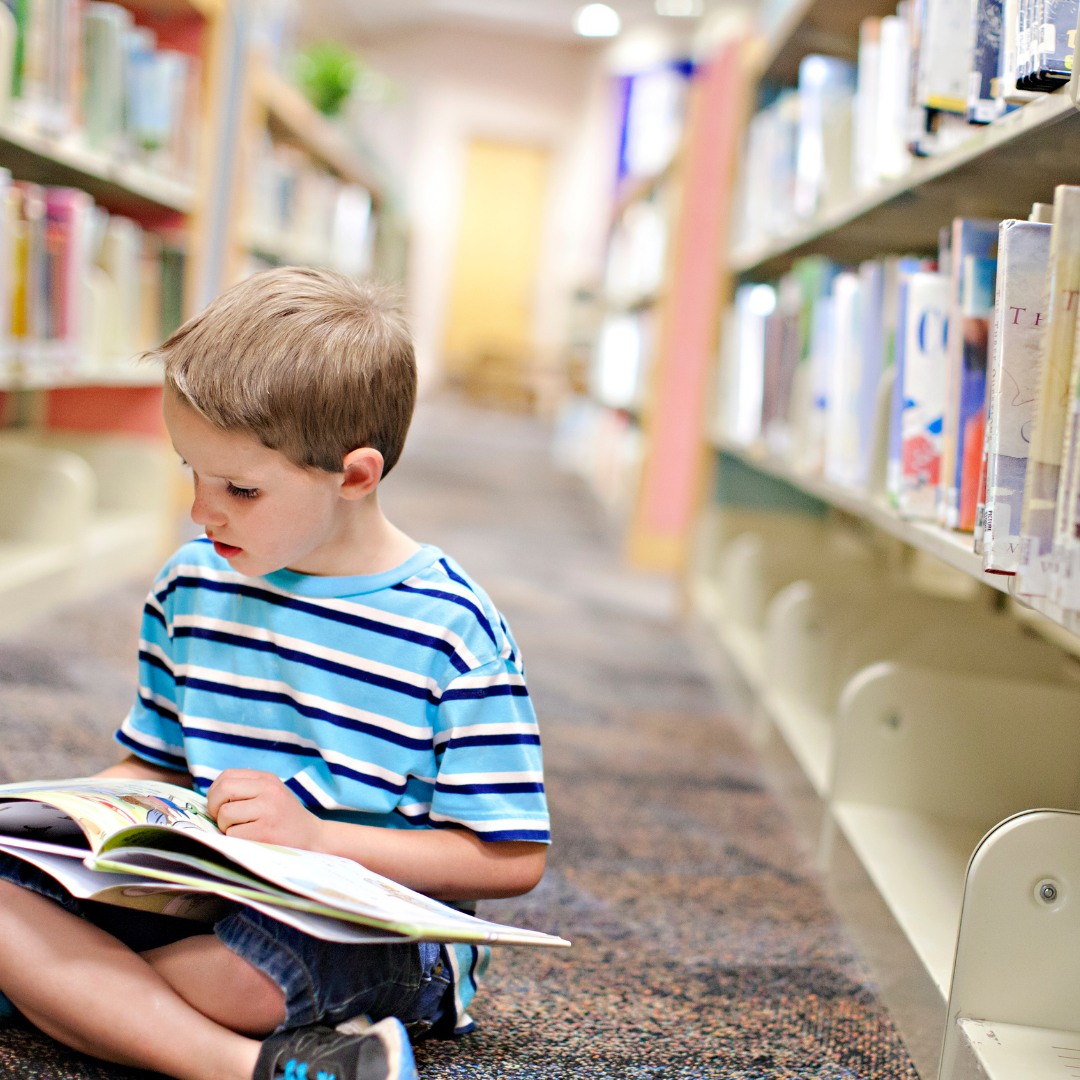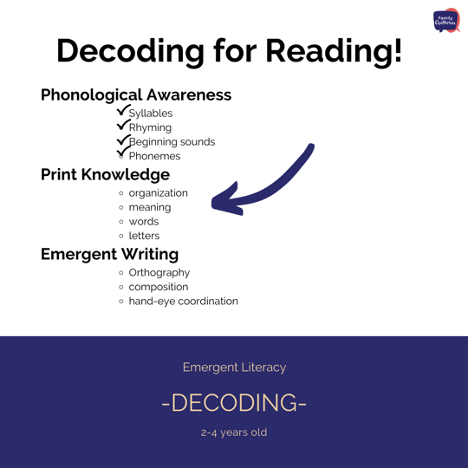

This week on our literacy series blog we are talking about decoding. Not just any part of decoding though, no we are talking about phonological awareness! Phonological Awareness (PA) is comprised a a few different components. Let’s jump in!
Phonological awareness is your child’s ability to remember, use, and differentiate different sounds. One important component of phonological awareness is your child’s ability to recognize syllables. English is a very syllable timed language and using appropriate syllables not only is important for speech that can be understood, but it is vitally important for your child’s reading development. Let’s take some simple toys and give you some tangible examples. Since our last phonological awareness post focused on animals, let’s keep the same theme. Your child has already discriminated which animal said each sound, remembered the sounds, and maybe even been able to manipulate the sounds by saying them! Now we need to draw attention to the number of syllables that a word has. We can do this in fun and creative ways like making a bunny hop twice to show your child how to break the word apart “Bu-nny”! You could have the horse gallop two times to show “po-ny”, or the chicken peck twice to show “chick-en”. What other ways do you have to show syllables for your little one?!
Another component of PA is rhyming. Rhyming words are words that sound the same at the end, not to be confused with words that are spelled the same at the end. Singing songs, little phrases, and reading books that include rhyming words and pointing these words out to your child is vitally important for their future reading success. The first step is to make sure that your child can identify a rhyming word. Start by asking them cat and Matt do those two rhyme? Once your child is successful in this activity you’re able to move on to having your child generate a rhyming word such as, what word rhymes with dog? Helping your child learn how to rhyme is a critical component to their phonological awareness and ultimately their decoding skills.
Next up, identifying beginning sounds. First and foremost your child will need to understand the concept of beginning. I love to use visuals to help children grasp the concepts that we are talking about and there are many options when you go to demonstrate a visual of beginning. You could use a choo-choo train, a line of stuffed animals, or even A set of drawn items on a paper. Once your child understands the first concept or beginning you can start to point out words that start with the same sound. for your speech tip this week we recommend going on a sound hunt. Pick your child’s favorite sound and take time going around the house to find all of the things that you can that begin with the same sound. For example your child’s favorite sound might be a.m. and you can explore each room in the house finding all of the things that begin with M such as mom, marker, moose, magnet tiles, milk and so much more.
We now land on the final piece of phonological awareness which is phonemes. Phonemes are a fancy way to say individual sounds. It is critical that your child understand how to play with the sounds in order to create words, deconstruct the sounds, and then reconstruct them in order to build a new word. This is an essence, reading. The way that we recommend working on this with early readers/pre-literacy skills, is making it fun, incorporating it into play, and using as many visuals as possible. Perhaps your child is interested in putting alphabet letters onto the refrigerator. Or maybe they are very into trains. No matter what toy or activity interest then we need to find a way to help them use these toys as visuals to learn about the sound that comprise the words. Let’s give you a tangible example. If your child is interested in trains you might name the engine train the CH sound. You could then add a second tender behind your train and call it oo. You could then combine the sounds together to make choo. Once your child appears to understand this game and the representation of trains as sounds you could then add a caboose which might be the sound Z to create a totally new word choose. By using toys to represent sounds and then showing your child how you can connect the sounds together to make words and then deconstruct them to make new words will solidify and develop their early literacy skills by understanding individual phonemes to improve their phonological awareness, strengthen their decoding skills, and set them on the right path to being a strong reader.
Check back later this week to hear more about the decoding portion of the reading formula which is print knowledge!

-Kasey